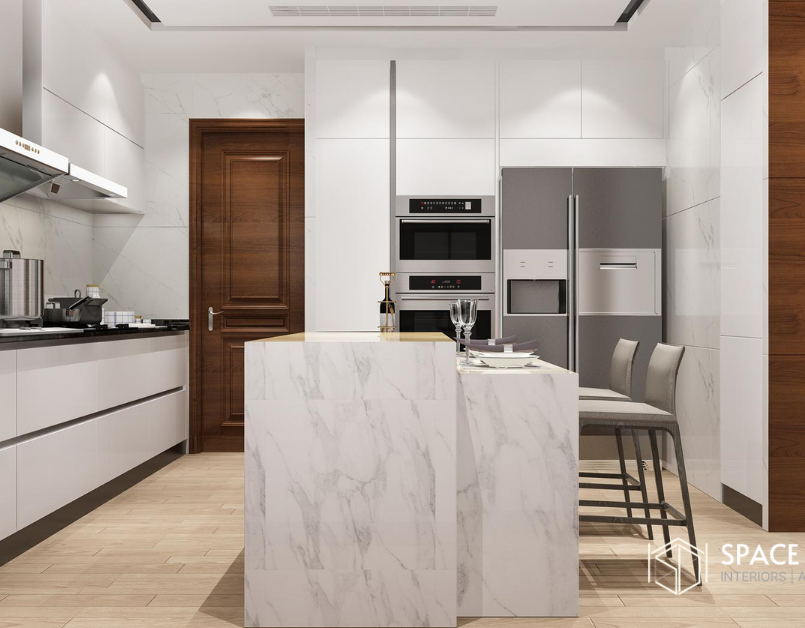What Is Minimalist Interior Design Renovation Style? | 7 Tips to Implement It
Interior Design Renovation Style

It’s tempting to need to jump on the upgrade train. If done right, remodelling your living space can be an intelligent investment, adding equity to your home. In reality, knocking down walls and introducing granite countertops is more challenging than it appears on TV. Home projects can become complicated, with many elements to consider (and potential questions that can catch you by surprise). If you desire to renovate your home but are unsure where to begin, experts agree that the primary thing to get done is to characterize your vision and needs, then hire pros to do the demolishing and heavy lifting.
As we settle into the second year of living through Covid-19 and the ensuing property boom, our homes remain in the spotlight more than ever. Whether you’re planning to sell, downsize or trade up, a renovation is on the cards. Whether you’re just upgrading the kitchen or bathroom, or doing something more substantial like an extension, ask anyone who’s been through a reno, and they’ll warn you that it’s a rollercoaster. From council headaches and building delays to material shortages and unexpected discoveries (hello, rising damp or asbestos), the fact is, even the simplest-seeming renovations can blow out your Budget and tamper with your sanity.
So how does one avoid unexpected or nasty surprises? While some issues, like old, leaky plumbing, are unavoidable, many problems can easily be avoided by proper planning and due diligence from the outset.
Four renovation gurus give their best advice for embarking on a home renovation project. From designing and planning to first-timer tips to hiring the best contractor, these pointers will get you started on the overwhelming process of updating your abode. If you’ve been considering renovating your space, read this first; it could help you avoid costly mistakes (and a few headaches) along the way.
Planning an extensive renovation taking up more than one room or area of the house? You might want to move out while it’s happening—so Budget accordingly. “I can’t tell you how often I’ve had to explain to my clients that they cannot live in a single bedroom, with three kids and a dog, with one bathroom and no kitchen, while we take the rest of the house down to the studs.

One of the well-known phrases you’ll hear when discussing interior renovations is, “whatever you initially planned on spending, double it, and double the time with it.” Regardless of their scale, renovations can be very time-consuming and costly, especially when unexpected changes pop up at the last minute. However, we are often met with situations where the interior layout is no longer efficient, the interior design is a little outdated, and it’s time to change.
Giving your space an upgrade does not necessarily mean spending all your savings, and spending less does not necessarily mean low-quality work. From doing the construction work yourself to giving furniture pieces completely new functions, here are different ways to renovate residential and commercial interior spaces without breaking the bank.
Think local. Whether local materials, expertise, or construction methods, vernacular techniques and materials are becoming increasingly relevant in architecture due to their financial and environmental benefits. Due to growing concerns about environmental and economic expenses caused by construction, China, which is considered the world’s most extensive population base and quickest economic development, has encouraged its architects to consider methods of construction that are more responsive to local conditions, such as examining the reuse of local materials like wood, tiles, stones, bricks, bamboo, rammed earth, and recycled kiln bricks. Affordable options are often found not too far from home, so ask around and research as much as possible before beginning the project.
This is an ideal field if you have a knack for planning spaces and coordinating furnishings and accessories. Interior designers (aka decorators, if they don’t hold a degree from a licenced university or college) beautify, improve and refresh the appearance and usefulness of interior spaces in residential and business settings. Many specialize in a particular kind of design, like kitchen design or lighting solutions, and many expand their income by selling decorative products like accessories and furniture.

The homeowner has a dream house in his mind. It is challenging to meet all the expectations and give the correct result.
It is a balancing act between three pillars of Aesthetics, which means look and feel, then functionality which means how certain parts of the house will get used, how space will get utilized, and the third aspect is Budget. So aesthetics, functionality, and Budget are all three things that must be balanced very nicely. An experienced contractor knows how to do that.
Your contractor keeps increasing the Budget, and he keeps telling you that “we have exceeded budget, now I’ll have to charge something extra for XYZ and then something extra for something else.” Such dialogue spoils the whole project. The homeowner starts losing patience and trust in the contractor since time and money have exceeded beyond imagination.
To speed up a project, the contractor starts compromising on work. Complete team, every member of the team is on fire; everyone is rushing to complete the job. Everyone has to take a cut of their pay. It’s a sad picture, and this story is typical for each renovation. 90% or more of the homeowners who renovate their homes are unhappy with how the project was executed.
A good contractor is wearing a lot of hats at the same time; he is managing the team, he is dealing with you, dealing with shopkeepers for the material, and he is balancing these three aspects. Budget, look and feel, and functionality.
Now the problem occurs when changes in the plan start pouring in after the project starts. After you have begun the work, small changes keep happening. These add up and completely change the scope of the project. All the changes after the project start to add cost and time to the project.;
















